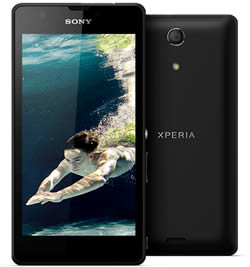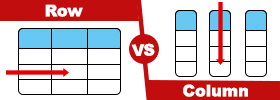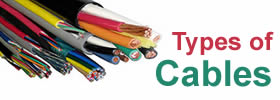Difference between Sony Xperia ZR and LG Optimus G Pro
Key difference: The Sony Xperia ZR is essentially a smaller version of the flagship Xperia Z that offers much of the same features. Like the Xperia Z, the new Xperia ZR is water and dust resistant. However, the phone can also be used underwater and can sustain being submerged under water for up to 30 minutes, unlike the Z. The Xperia ZR runs on Android OS, v4.1 Jelly Bean, which is powered by a Quad-core 1.5 GHz Krait Qualcomm Snapdragon APQ8064 processor with 2 GB of RAM. LG Optimus G Pro has major updates to its predecessor, the LG Optimus G. The device sports a massive 5.5-inch True Full HD IPS touch screen with multi-touch capability and a pixel density of 401 ppi. Under the hood, the phone is powered by 1.7 GHz Quad-core Snapdragon 600, making it pretty fast and speedy.

Sony is a prominent technology company and is known best for its electronics such as phones, TVs, gaming systems, etc. Xperia is a well known brand of smartphones that are a part of the Sony Mobile. The Xperia brand was initially a collaboration with Ericsson but has since then been dissolved. Now, Sony has single handedly taken it upon itself to ship out new phones, while maintaining the level of quality and design of the older versions.
One of the most popular phones recently has been the Xperia Z, which is a dust-proof and water-proof phone. It was the flagship phone for Sony. Sony has since announced smaller and cheaper variants of the phone: the Sony Xperia ZL and the Sony Xperia ZR. The Sony Xperia ZR is essentially a smaller version of the flagship Xperia Z that offers much of the same features.
Like the Xperia Z, the new Xperia ZR is water and dust resistant. However, the phone can also be used underwater and can sustain being submerged under water for up to 30 minutes, unlike the Z. Nonetheless, the ZR cannot be submerged under salt water, fresh water only! The device has a dedicated camera key which allows the user to shoot images and HD video underwater.
The Xperia ZR runs on Android OS, v4.1 Jelly Bean, which is powered by a Quad-core 1.5 GHz Krait Qualcomm Snapdragon APQ8064 processor with 2 GB of RAM. The phone has 8 GB of internal memory which is expandable by up to 32 GB via a microSD card.
The phone features a 4.55 inches TFT screen which is “as impressive as HDTV – HD Reality Display,’ according to Xperia ZR’s website. The screen is enhanced by the Mobile BRAVIA Engine 2 and has a resolution of 1280 x 720 pixels. The phone also has a 13 megapixel fast-capture camera with Exmor RS, which enhances low lighting images. The device also has a secondary front-facing VGA camera.
 The LG Optimus G Pro is the successor to the original LG Optimus G and resembles the Samsung Galaxy Note II in size and features. The phone has already been announced and launched in Korea, with launch date yet to be released for the rest of the world.
The LG Optimus G Pro is the successor to the original LG Optimus G and resembles the Samsung Galaxy Note II in size and features. The phone has already been announced and launched in Korea, with launch date yet to be released for the rest of the world.
The LG Optimus G Pro has major updates to its predecessor, the LG Optimus G. The device sports a massive 5.5-inch True Full HD IPS touch screen with multi-touch capability and a pixel density of 401 ppi. The screen is truly amazing in viewing and the bigger screen is perfect for multi-purpose use (things people usually whip out their tablets or laptops for). The high resolution ensures crisp and sharp images, while the phone has great viewing angles. The large screen also ensures that the device is hard to hold and function with one hand. The G Pro has a sleek plastic chassis, which makes it a slippery when trying to maneuver single-handedly. However, the plastic chassis does not make the phone weak; in fact it is very resilient. LG has made it a bit easier by placing the power and the volume buttons on the right side of the device, rather than placing the power button on the top. Operating the phone requires the person holds the phone in one hand and operates using the other.
Under the hood, the phone is powered by 1.7 GHz Quad-core Snapdragon 600, making it pretty fast and speedy. The device can handle running multiple operations as well as high-res games, without major glitches. The device offers internal memory capacity of 32 GB, which can be expanded further using the microSD slot by 64 GB. The device provides 2 GB worth of RAM, decreasing the lagging effect when running too many apps. The device comes with an NFC, Infrared port, USB and Wi-Fi hotspot capability. The Infrared port ensures that the phone can be made into a remote for any supporting device, while the hot-spot allows the person to share internet with others.
The device houses a 13 MP primary camera for picture taking that supports 4208 x 3120 pixels, and a 2.1 MP secondary camera for video conferencing or calls. The camera is pretty decent in terms of taking hi-res, sharp photos, however, according to The Verge review; the camera has a tendency of washing out colors from the images. The huge viewfinder on the device is great for taking images. Both the cameras have the ability to take videos at 1080p@30fps. One pretty nifty feature on the phone is the Dual-recording feature (similar to the one on the S4), which allows the user to record videos simultaneously from both of the camera. Another feature that is boasted by the company is the Virtual Reality Panorama shot that allows the user to take images and stitch them together for 360 degree panorama shots (this feature is very similar to the Photo Shoot on the Nexus 4).
The device houses a massive Li-Po 3140 mAh battery that is removable, a must feature for many smartphone lovers. The company has yet to release the official data about the Talktime and the Stand-by time offered by the phone. LG has also added the QSlide apps and the QButton feature on the phone. The QSlide apps are widgets that allow the user to do multiple jobs on the same screen, such as take notes, see the calendar, check e-mail and can also allow the user to watch a video and text at the same time. A similar feature is available in the Note II, but it the system only allows the user to access limited apps on the phone. The QButton located on the left side of the device allows the user to access any apps on the phone by pressing the button. The device is yet to hit other shores and prices will also be announced accordingly with the release dates.
The information for the detailed table about the two phones has been taken from the Sony Xperia website, theverge.com, engadget.com and GSMArena.com.
|
|
Sony Xperia ZR |
LG Optimus G Pro |
|
Launch Date |
June 2013 |
Q2/2013 |
|
Company |
Sony |
LG |
|
Size |
5.15 x 2.63 x 0.40 inches (131.3 x 67.3 x 10.5 mm) |
150.2 x 76.1 x 9.4 mm |
|
Display |
4.55 inches TFT, 16 millions colors |
5.5 inches True Full HD IPS Plus LCD capacitive touchscreen |
|
Screen |
1280 x 720 pixels (~322.77 ppi pixel density) |
1080 x 1920 pixels (~401 ppi pixel density) |
|
Protection |
Shatter-proof sheet on scratch-resistant glass |
N/A |
|
Weight |
138 grams (4.93 ounces) |
172 grams |
|
2G Network |
850, 900, 1800, 1900 MHz |
GSM 850 / 900 / 1800 / 1900 |
|
3G Network |
UMTS HSPA+ 900 (Band VIII), 2100 (Band I) Mhz (not available in all markets) UMTS HSPA+ 850 (Band V), 1700 (Band IV), 1900 (Band II), 2100 (Band I) (not available in all markets) |
HSDPA 900 / 2100 |
|
4G Network |
LTE 800 / 850 / 900 / 1800 / 2100 / 2600 (not available in all markets) |
Depends on market availability |
|
GUI |
Sony UI |
LG Optimus UI |
|
CPU speed |
Quad-core 1.5 GHz Krait |
1.7 GHz Quad-core Snapdragon 600 |
|
GPU |
Adreno 320 |
Adreno 320 |
|
OS |
Android OS, v4.1 (Jelly Bean) |
Android v4.1.2 (Jelly Bean) |
|
Chipset |
Qualcomm Snapdragon APQ8064 |
Qualcomm APQ8064T Snapdragon 600 |
|
RAM |
2 GB |
2 GB |
|
SIM Size |
Micro-SIM |
microSIM |
|
Internal Memory |
8 GB |
32 GB |
|
Expandable Memory |
microSD card, up to 32 GB |
Up to 64 GB |
|
Sensors |
Accelerometer, gyro, proximity, compass |
Accelerometer, gyro, proximity, compass |
|
Connectivity |
3.5 mm audio jack (CTIA), aGPS, Bluetooth 4.0 wireless technology, DLNA Certified, Media Go, Media Transfer Protocol support, Micro USB support, Native USB tethering, NFC, Screen mirroring, Xperia Link, Wi-Fi and WiFi Hotspot functionality |
2G, 3G, 4G, Wi-Fi, Bluetooth, NFC, Infrared port, DLNA, Wi-Fi hotspot, USB, USB Host. |
|
Data |
GPRS, EDGE, WLAN, Bluetooth, USB, NFC |
GPRS, EDGE, WLAN, Bluetooth, NFC, Infrared port, USB. |
|
Speed |
HSDPA, 42 Mbps; HSUPA, 5.8 Mbps; LTE, Cat3, 50 Mbps UL, 100 Mbps DL |
HSDPA, HSUPA, LTE |
|
WLAN |
Wi-Fi 802.11 a/b/g/n, Wi-Fi Direct, DLNA, Wi-Fi hotspot |
Wi-Fi 802.11 a/b/g/n/ac, dual-band, Wi-Fi Direct, DLNA, Wi-Fi hotspot |
|
Bluetooth |
Bluetooth 4.0 |
Bluetooth v4.0 with A2DP |
|
USB |
microUSB v2.0 (MHL) |
microUSB v2.0 (MHL), USB Host |
|
Primary Camera |
13 megapixel fast-capture camera with Exmor RS |
13 MP, 4208 x 3120 pixels |
|
Secondary Camera |
VGA |
2.1 MP, 1080p@30fps |
|
Video |
Full HD video recording (1080p) |
1080p@30fps Dual-video recording HDR |
|
Camera Features |
16x digital zoom with auto focus, Sony Exmor RS for mobile image sensor, Face detection, HDR for both picture/film, Flash/Photo light |
Geo-tagging Face detection Image stabilization Dual Record Virtual Reality (VR) Panorama |
|
Sound Enhancement |
Active noise cancellation with dedicated mic |
Dolby mobile sound enhancement |
|
Audio supported formats |
MP3, 3GPP, MP4, SMF, WAV, OTA, Ogg vorbis, AMR |
MP3/ WMA/ WAV/ FLAC/ eAAC+/ AC3 player |
|
Video supported formats |
3GPP, MP4, MKV, AVI, XVID, MOV |
MP4/ H.264/ H.263/ WMV/ DviX player |
|
Battery Capacity |
Li-ion 2300 mAh battery |
Removable Li-Po 3140 mAh |
|
Stand-by |
Up to 520 hours |
No official data released |
|
Talk time |
Up to 13 hours |
No official data released |
|
Available Colors |
Black, White, Pink, Mint |
Black, White |
|
Messaging |
SMS (threaded view), MMS, Email, IM, Push Email |
SMS(threaded view), MMS, Email, Push Mail, IM, RSS |
|
Browser |
HTML5 |
HTML5, Adobe Flash |
|
Radio |
FM Radio with RDS |
Stereo FM radio with RDS |
|
GPS |
Yes, with A-GPS support |
GPS with A-GPS support and GLONASS |
|
Java |
Yes, via Java MIDP emulator |
Java MIDP emulator |
|
Additional Features |
|
|
Image Courtesy: sonymobile.com, engadget.com









Add new comment